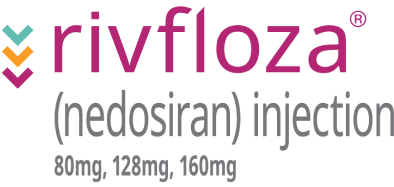What is Rivfloza®
(nedosiran) injection?
A once-monthly treatment that lowers and keeps urinary oxalate levels under control in people with PH1.
Rivfloza® helps prevent overproduction of oxalate in the liver
How Rivfloza® works

In people with PH1, the liver produces too much oxalate.

Rivfloza® targets the liver to reduce the overproduction of oxalate.

The result is lower levels of oxalate in urine, which is eliminated by the kidneys.
How Rivfloza® was studied
Rivfloza® was studied for 6 months in 35 people with PH1 or PH2 and relatively preserved kidney function. They received either Rivfloza® once monthly or placebo (a substance with no active ingredients). Not enough people with PH2 were studied to determine if Rivfloza® works in PH2. Therefore, Rivfloza® is only approved for use in people with PH1.

Rivfloza® reduces oxalate levels in the urine and keeps them under control
People with PH1 treated with Rivfloza® achieved an average difference of 56% in 24-hour urinary oxalate compared to placebo, measured monthly from 3 months to 6 months.
What was studied:
The study evaluated the percent change in urinary oxalate from the start of the study. The amount of urinary oxalate was measured every 30 days.
All people who received Rivfloza® for an additional 6 months maintained the reduction in urinary oxalate.
What was studied:
13 people with PH1 continued to receive treatment with Rivfloza® in a long-term extension study.
3 out of 4 people with PH1 treated with Rivfloza® had reduced levels of oxalate in their urine, down to normal or almost normal levels after 6 months of study.
What was studied:
24-hour urine samples were collected and tested to determine whether patients’ levels of urinary oxalate were normal or almost normal (elevated slightly above the normal range).
People who received placebo in the study had higher initial urinary oxalate levels.
Talk to your health care professional about what to expect from treatment.

Rivfloza® is safe and well-tolerated
There were no serious treatment-related side effects in people with PH1 who received Rivfloza® in the clinical study.
The most common side effects (occurring in 39% of people in the clinical study) were injection site reactions, such as reddening, pain, bruising, rash, or dimple at site of injection.
- Injection site reactions were generally mild and did not lead to stopping treatment.



